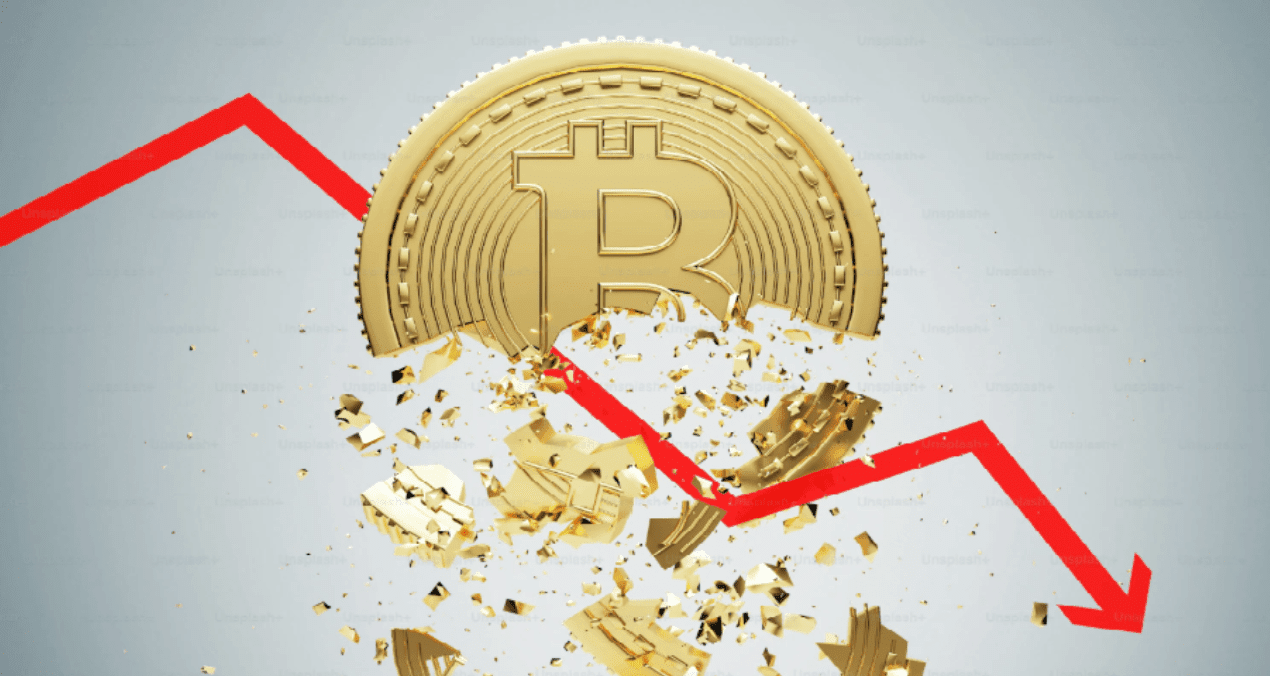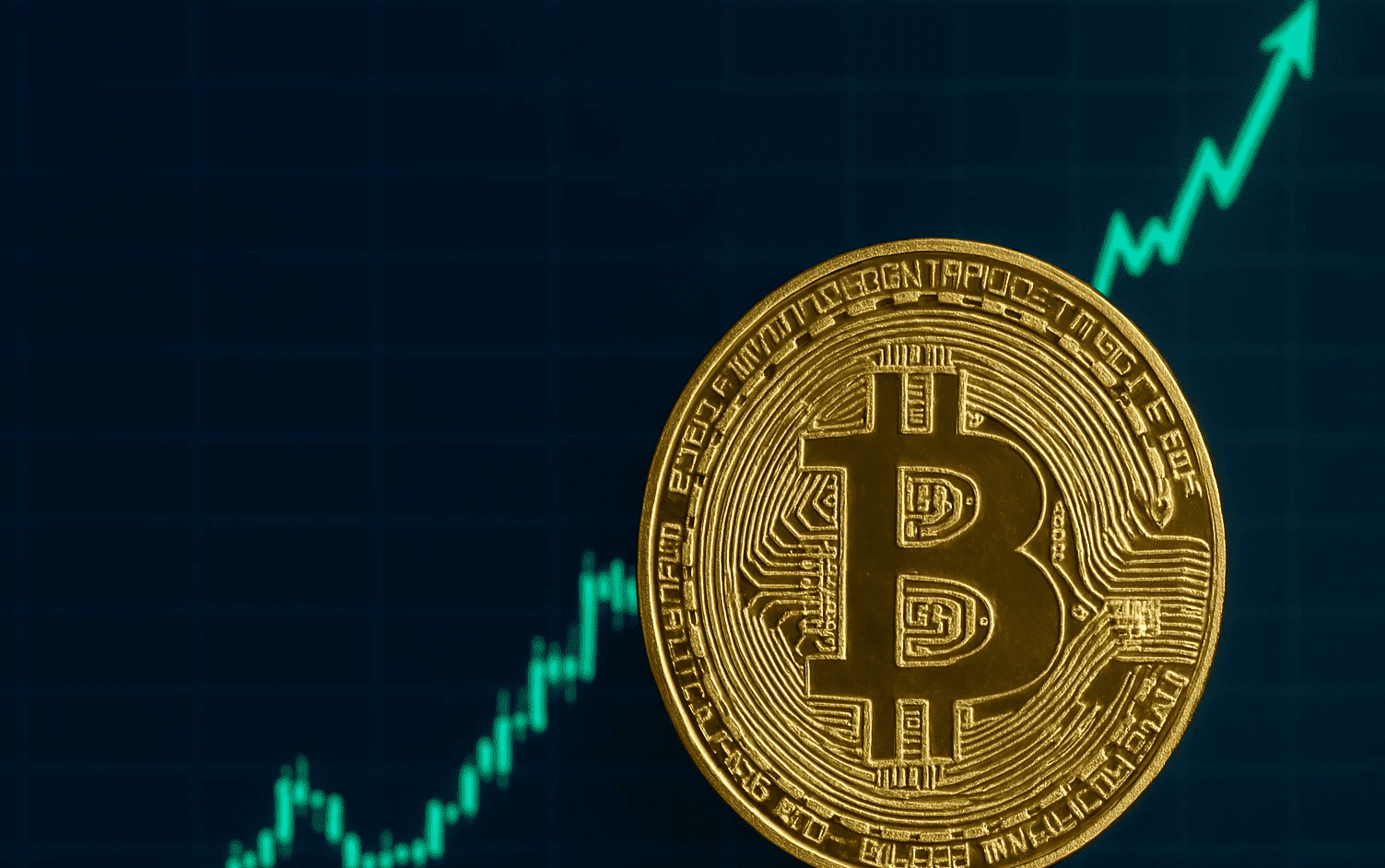Bitcoin Price
The relationship between Bitcoin and traditional stock markets has become increasingly complex and fascinating for investors worldwide. Understanding Bitcoin price correlation with stock market analysis is crucial for modern portfolio management and investment decision-making. As institutional adoption grows and regulatory frameworks evolve, the dynamics between cryptocurrency and traditional financial markets continue to shift dramatically.
Recent market events have shown that Bitcoin’s price movements are no longer operating in complete isolation from traditional financial assets. This correlation analysis reveals important insights about risk management, diversification strategies, and market sentiment indicators. Whether you’re a seasoned investor or newcomer to cryptocurrency markets, grasping these relationships can significantly impact your investment outcomes and risk assessment strategies.
What is Bitcoin Price Correlation with Stock Market Analysis?
Bitcoin price correlation with stock market analysis examines the statistical relationship between Bitcoin’s price movements and major stock indices like the S&P 500, NASDAQ, and Dow Jones. This analysis helps investors understand how closely these asset classes move together during different market conditions.
 Correlation coefficients range from -1 to +1, where +1 indicates perfect positive correlation, -1 shows perfect negative correlation, and 0 suggests no relationship. Understanding these metrics provides valuable insights into portfolio diversification and risk management strategies. The correlation between Bitcoin and stocks has evolved significantly since Bitcoin’s inception. Initially, Bitcoin operated as an uncorrelated asset, but recent years have shown periods of increasing correlation, particularly during market stress events and economic uncertainty.
Correlation coefficients range from -1 to +1, where +1 indicates perfect positive correlation, -1 shows perfect negative correlation, and 0 suggests no relationship. Understanding these metrics provides valuable insights into portfolio diversification and risk management strategies. The correlation between Bitcoin and stocks has evolved significantly since Bitcoin’s inception. Initially, Bitcoin operated as an uncorrelated asset, but recent years have shown periods of increasing correlation, particularly during market stress events and economic uncertainty.
Historical Bitcoin and Stock Market Correlation Patterns
Early Years: The Decoupled Phase (2009-2017)
During Bitcoin’s early years, the correlation with traditional stock markets remained minimal. Bitcoin operated primarily as a speculative asset driven by technological adoption, regulatory developments, and crypto-specific news events. This period offered investors true diversification benefits.
The low correlation during this phase made Bitcoin an attractive hedge against traditional market downturns. Investors could potentially reduce overall portfolio volatility by including Bitcoin allocations alongside conventional assets.
The Maturation Period (2018-2022)
As Bitcoin gained mainstream attention and institutional adoption increased, correlation patterns began shifting. Major events like the COVID-19 pandemic, monetary policy changes, and economic uncertainty started influencing both Bitcoin and stock markets simultaneously.
During market stress periods, correlation coefficients often increased significantly, sometimes reaching 0.6 or higher. This suggested that Bitcoin was beginning to behave more like a risk asset rather than a safe haven during turbulent times.
Current Landscape (2023-2025)
Today’s Bitcoin price correlation with stock market analysis reveals a more nuanced relationship. While correlation remains variable, certain patterns have emerged that investors can leverage for better decision-making.
Key Factors Influencing Bitcoin-Stock Market Correlation
Institutional Adoption Impact
The entry of institutional investors like Tesla, MicroStrategy, and various ETF providers has fundamentally altered Bitcoin’s correlation dynamics. These institutions often manage both traditional and cryptocurrency portfolios, creating natural linkages between asset classes.
Corporate treasury adoption and the launch of Bitcoin ETFs have made Bitcoin more accessible to traditional investors, increasing correlation during periods of institutional rebalancing and risk management decisions.
Macroeconomic Factors
Interest rate decisions, inflation data, and monetary policy announcements now significantly impact both Bitcoin and stock markets. Federal Reserve policies, in particular, have shown strong influence on both asset classes simultaneously.
Economic indicators like GDP growth, unemployment rates, and consumer sentiment surveys create synchronized movements between Bitcoin and traditional markets, especially during major economic announcements.
Market Sentiment and Risk Appetite
During periods of high market optimism, both Bitcoin and stocks tend to rise together as investors increase risk appetite. Conversely, during market fear and uncertainty, both asset classes often decline simultaneously as investors seek safety.
Social media sentiment, news coverage, and market psychology play crucial roles in driving correlated movements between Bitcoin and traditional financial markets.
Measuring Bitcoin Stock Market Correlation: Technical Analysis Methods
Correlation Coefficient Calculations
The most common method for measuring Bitcoin price correlation with stock market analysis involves calculating Pearson correlation coefficients over various time periods. Rolling correlations provide insights into how relationships change over time.
Statistical software and financial platforms offer tools for calculating these correlations using daily, weekly, or monthly price data. Understanding these calculations helps investors make informed decisions about portfolio allocation.
Beta Analysis
Beta measures Bitcoin’s sensitivity to stock market movements. A beta greater than 1 indicates Bitcoin moves more dramatically than the stock market, while beta less than 1 suggests lower volatility relative to stocks.
This analysis helps investors understand Bitcoin’s risk characteristics compared to traditional equity investments and adjust position sizes accordingly.
Volatility Clustering Analysis
Examining periods when both Bitcoin and stocks experience high volatility simultaneously provides insights into market stress conditions and correlation breakdowns.
These clustering patterns help identify optimal entry and exit points for investors looking to capitalize on correlation changes.
Investment Implications and Portfolio Strategies
Diversification Benefits
Understanding Bitcoin price correlation with stock market analysis enables better portfolio diversification decisions. During low correlation periods, Bitcoin can provide valuable diversification benefits and reduce overall portfolio risk.
Investors can optimize their asset allocation by monitoring correlation trends and adjusting Bitcoin positions based on changing market dynamics.
Risk Management Considerations
High correlation periods require different risk management approaches. When Bitcoin and stocks move together, traditional diversification benefits diminish, requiring alternative hedging strategies.
Dynamic hedging approaches that consider correlation changes can help protect portfolios during market stress periods when correlations typically increase.
Timing Strategies
Correlation analysis can inform market timing decisions. Periods of divergence between Bitcoin and stocks may present opportunities for tactical allocation adjustments.
Investors can potentially enhance returns by increasing Bitcoin exposure during low correlation periods and reducing exposure when correlations peak.
Future Outlook: Bitcoin Price Correlation with Stock Market Analysis
Regulatory Impact
Evolving cryptocurrency regulations will continue influencing Bitcoin’s correlation with traditional markets. Clear regulatory frameworks may reduce correlation by providing distinct treatment for digital assets.
However, integration of Bitcoin into traditional financial systems through ETFs and institutional products may increase correlation over time.
Technology Development
Blockchain technology improvements, scalability solutions, and new use cases may help Bitcoin maintain some independence from traditional market cycles.
The development of decentralized finance (DeFi) and other crypto-specific applications could create unique value drivers separate from traditional market influences.
Market Maturation
As the cryptocurrency market matures, Bitcoin’s correlation with stocks may stabilize around specific ranges, providing more predictable relationship patterns for investors.
Increased market depth and liquidity may reduce extreme correlation spikes during market stress events.
Practical Tools and Resources for Correlation Analysis
Data Sources and Platforms
Several platforms provide real-time Bitcoin price correlation with stock market analysis data. Professional traders and investors can access these tools through financial data providers and trading platforms.
 Suggested outbound link: Consider linking to a reputable financial data provider like Yahoo Finance or Bloomberg for correlation data.
Suggested outbound link: Consider linking to a reputable financial data provider like Yahoo Finance or Bloomberg for correlation data.
Technical Indicators
Various technical indicators can help identify correlation trends, including moving averages, RSI, and custom correlation oscillators designed specifically for cryptocurrency analysis.
Suggested internal link anchor text: “Bitcoin technical analysis indicators” – This could link to a related article about Bitcoin technical analysis methods.
Automated Monitoring Systems
Setting up automated alerts for correlation changes helps investors stay informed about shifting market relationships without constant manual monitoring.
Risk Warnings and Considerations
Correlation Instability
Bitcoin price correlation with stock market analysis shows that correlations can change rapidly and unpredictably. Investors should not rely solely on historical correlation patterns for future investment decisions.
Market Stress Events
During extreme market events, correlations often spike unexpectedly, potentially eliminating diversification benefits when investors need them most.
Regulatory Risks
Changing regulations can cause sudden correlation shifts that may not be captured in historical analysis, requiring continuous monitoring and adjustment of investment strategies.
Final thought
Understanding Bitcoin price correlation with stock market analysis is essential for modern investors navigating today’s interconnected financial markets. The relationship between Bitcoin and traditional stocks continues evolving as institutional adoption grows and regulatory frameworks develop.
Successful investors must monitor these correlation patterns continuously, adapting their strategies based on changing market dynamics. While correlation provides valuable insights for portfolio optimization and risk management, it should be combined with other analysis methods for comprehensive investment decision-making.
Start analyzing Bitcoin price correlation with stock market analysis today by tracking key correlation metrics and incorporating these insights into your investment strategy. Stay informed about changing market relationships to maximize your portfolio’s risk-adjusted returns in this evolving financial landscape.




 Bitcoin $107K Israel-Iran conflict function as a “digital gold” is still changing. But it has trouble in places where people don’t want to take risks. The present conflict has caused oil prices to rise sharply and has led to a general market retreat from assets with a lot of volatility. As things get worse. Bitcoin’s ability to hold value will be put to the test. Even if people are generally positive about Bitcoin in the long run. It’s likely that it will be affected by dramatic drops in traditional markets. This geopolitical stress may change how people see Bitcoin as a non-correlated asset. Or it may make people think that it is still subject to risk at times of global crises.
Bitcoin $107K Israel-Iran conflict function as a “digital gold” is still changing. But it has trouble in places where people don’t want to take risks. The present conflict has caused oil prices to rise sharply and has led to a general market retreat from assets with a lot of volatility. As things get worse. Bitcoin’s ability to hold value will be put to the test. Even if people are generally positive about Bitcoin in the long run. It’s likely that it will be affected by dramatic drops in traditional markets. This geopolitical stress may change how people see Bitcoin as a non-correlated asset. Or it may make people think that it is still subject to risk at times of global crises. On the other hand, if the present range doesn’t hold, the price might drop to $102,000 or below, especially if news about geopolitics causes a worse market correction. Short-term traders and long-term investors both need to stay on their toes because volatility is likely to continue.
On the other hand, if the present range doesn’t hold, the price might drop to $102,000 or below, especially if news about geopolitics causes a worse market correction. Short-term traders and long-term investors both need to stay on their toes because volatility is likely to continue.
 The Relative Strength Index (RSI) has dropped out of the overbought zone, indicating that BTC is now in a more balanced zone where it can build up. Volume levels have remained unchanged, indicating that investors are still interested, despite some short-term concerns. This time of standstill is similar to how things have been in the past during important global events. When big geopolitical or economic decisions are in the air, such as the fate of US-China trade talks, investors are less likely to make risky investments.
The Relative Strength Index (RSI) has dropped out of the overbought zone, indicating that BTC is now in a more balanced zone where it can build up. Volume levels have remained unchanged, indicating that investors are still interested, despite some short-term concerns. This time of standstill is similar to how things have been in the past during important global events. When big geopolitical or economic decisions are in the air, such as the fate of US-China trade talks, investors are less likely to make risky investments.
 Similarly, Bitcoin’s historic surge to roughly $20,000 in 2016 and 2017 followed a prolonged period of rising oil prices, which were triggered by OPEC’s production cuts. Even if correlation doesn’t imply causation, the fact that Bitcoin consistently follows oil’s bullish moves suggests that there are larger economic factors that affect both markets simultaneously, such as fears of inflation, fiat liquidity, and investor behavior.
Similarly, Bitcoin’s historic surge to roughly $20,000 in 2016 and 2017 followed a prolonged period of rising oil prices, which were triggered by OPEC’s production cuts. Even if correlation doesn’t imply causation, the fact that Bitcoin consistently follows oil’s bullish moves suggests that there are larger economic factors that affect both markets simultaneously, such as fears of inflation, fiat liquidity, and investor behavior.

 On-chain statistics provide further evidence of the validity of this comeback. According to Glassnode data, Bitcoin accumulation among “whale” addresses—wallets containing more than 1,000 BTC—has started purchasing on price declines, and this trend is rising. Likewise, hashrate and mining difficulty remain strong indicators of network health. Highlighting the fundamental security and confidence in the Bitcoin blockchain. Despite brief price fluctuations. These principles show the dual character of the market—solid long-term conviction tempered by short-term caution—vastly different from the fragility of the price action.
On-chain statistics provide further evidence of the validity of this comeback. According to Glassnode data, Bitcoin accumulation among “whale” addresses—wallets containing more than 1,000 BTC—has started purchasing on price declines, and this trend is rising. Likewise, hashrate and mining difficulty remain strong indicators of network health. Highlighting the fundamental security and confidence in the Bitcoin blockchain. Despite brief price fluctuations. These principles show the dual character of the market—solid long-term conviction tempered by short-term caution—vastly different from the fragility of the price action. However. As a store of value and an inflation-resistant asset. Bitcoin’s fixed quantity and distributed character. When viewed over longer time horizons. Accentuate its value proposition. This dichotomy helps explain the sometimes conflicting price behavior observed during economic crises: a short-term linkage with risk assets and a long-term dissociation driven by adoption patterns and shortages.
However. As a store of value and an inflation-resistant asset. Bitcoin’s fixed quantity and distributed character. When viewed over longer time horizons. Accentuate its value proposition. This dichotomy helps explain the sometimes conflicting price behavior observed during economic crises: a short-term linkage with risk assets and a long-term dissociation driven by adoption patterns and shortages.
 Fidelity, BlackRock, and ARK Invest have invested in Bitcoin’s stability and growth. The adoption pattern of prior technical revolutions was scepticism, followed by mainstream institutional backing. The ETF clearance procedure also highlighted the asset class, allowing pension funds, asset managers, and high-net-worth individuals to participate.
Fidelity, BlackRock, and ARK Invest have invested in Bitcoin’s stability and growth. The adoption pattern of prior technical revolutions was scepticism, followed by mainstream institutional backing. The ETF clearance procedure also highlighted the asset class, allowing pension funds, asset managers, and high-net-worth individuals to participate. Still another important statistic, the MVRV Z-score, stays in a range that has always anticipated significant price swings. Whale activity has also picked up steam, with big wallets filled with Bitcoin over the past few weeks. Often regarded as leading predictors of significant price swings, these holders are less reactive to transient volatility.
Still another important statistic, the MVRV Z-score, stays in a range that has always anticipated significant price swings. Whale activity has also picked up steam, with big wallets filled with Bitcoin over the past few weeks. Often regarded as leading predictors of significant price swings, these holders are less reactive to transient volatility.
 Leading analytics systems like Glassnode and
Leading analytics systems like Glassnode and  Should Bitcoin retreat to this level, it would act as a litmus test for the durability of the present bull cycle. A strong defense of $100,000 might confirm the fundamental soundness of the market and create conditions for fresh hopeful momentum. On the other hand, a clean break below this level would allow more adjustments toward reduced support zones between $92,000 and $95,000.
Should Bitcoin retreat to this level, it would act as a litmus test for the durability of the present bull cycle. A strong defense of $100,000 might confirm the fundamental soundness of the market and create conditions for fresh hopeful momentum. On the other hand, a clean break below this level would allow more adjustments toward reduced support zones between $92,000 and $95,000.

 Moreover, risk assets, including cryptocurrencies, could benefit from increased investor demand as interest rates are expected to level off or drop in late 2025. Bitcoin’s fixed supply and growing demand from the institutional and retail sectors help define its macro scene.
Moreover, risk assets, including cryptocurrencies, could benefit from increased investor demand as interest rates are expected to level off or drop in late 2025. Bitcoin’s fixed supply and growing demand from the institutional and retail sectors help define its macro scene.
 These ETFs have caused supply shocks and helped Bitcoin price $112K resistance to be accepted from the perspective of conventional finance. Large numbers of BTC kept in ETF custody wallets have reduced the liquid supply of Bitcoin, leading to a demand-supply imbalance supporting higher prices. This phenomenon is somewhat similar to the cycle of 2020–2021, when the launch of institutional products resulted in explosive price increases.
These ETFs have caused supply shocks and helped Bitcoin price $112K resistance to be accepted from the perspective of conventional finance. Large numbers of BTC kept in ETF custody wallets have reduced the liquid supply of Bitcoin, leading to a demand-supply imbalance supporting higher prices. This phenomenon is somewhat similar to the cycle of 2020–2021, when the launch of institutional products resulted in explosive price increases. In neutral to optimistic zones, metrics such as the MVRV (Market Value to Realised Value) ratio and NUPL (Net Unrealised Profit/Loss) suggest there is still opportunity for price increase before the market reaches an explosive phase. As the hash rate keeps breaking new highs, suggesting robust network security and miner confidence in Bitcoin’s long-term future, miner behaviour also offers hints.
In neutral to optimistic zones, metrics such as the MVRV (Market Value to Realised Value) ratio and NUPL (Net Unrealised Profit/Loss) suggest there is still opportunity for price increase before the market reaches an explosive phase. As the hash rate keeps breaking new highs, suggesting robust network security and miner confidence in Bitcoin’s long-term future, miner behaviour also offers hints.
 Bitcoin completed a weekly cup-and-handle pattern, a bullish continuation pattern generally predicting significant gains. According to Fibonacci extension levels, BTC might reach $120,000 by late 2025 or early 2026 if it closes over $75,000 with volume. Moreover, market inflows have started to be significantly influenced by Bitcoin ETFs. Institutional capital has poured into the market since the U.S. Securities and Exchange Commission (SEC) approved spot Bitcoin ETFs earlier this year, validating BTC as a global asset class. Platforms like Grayscale and iShares have attracted billions in inflows, providing fresh pricing support.
Bitcoin completed a weekly cup-and-handle pattern, a bullish continuation pattern generally predicting significant gains. According to Fibonacci extension levels, BTC might reach $120,000 by late 2025 or early 2026 if it closes over $75,000 with volume. Moreover, market inflows have started to be significantly influenced by Bitcoin ETFs. Institutional capital has poured into the market since the U.S. Securities and Exchange Commission (SEC) approved spot Bitcoin ETFs earlier this year, validating BTC as a global asset class. Platforms like Grayscale and iShares have attracted billions in inflows, providing fresh pricing support. The daily chart shows XRP in a symmetric triangle. Breaking $0.80 would push prices above $1.50 and $3 in a strong bull market. Following previous trends, XRP rose from $0.30 to $3.00 during the 2017 bull run. Whale accumulation exceeds 10 million XRP wallets. Rising demand tightens supply and decreases currency reserves, leading to increasing prices.
The daily chart shows XRP in a symmetric triangle. Breaking $0.80 would push prices above $1.50 and $3 in a strong bull market. Following previous trends, XRP rose from $0.30 to $3.00 during the 2017 bull run. Whale accumulation exceeds 10 million XRP wallets. Rising demand tightens supply and decreases currency reserves, leading to increasing prices.